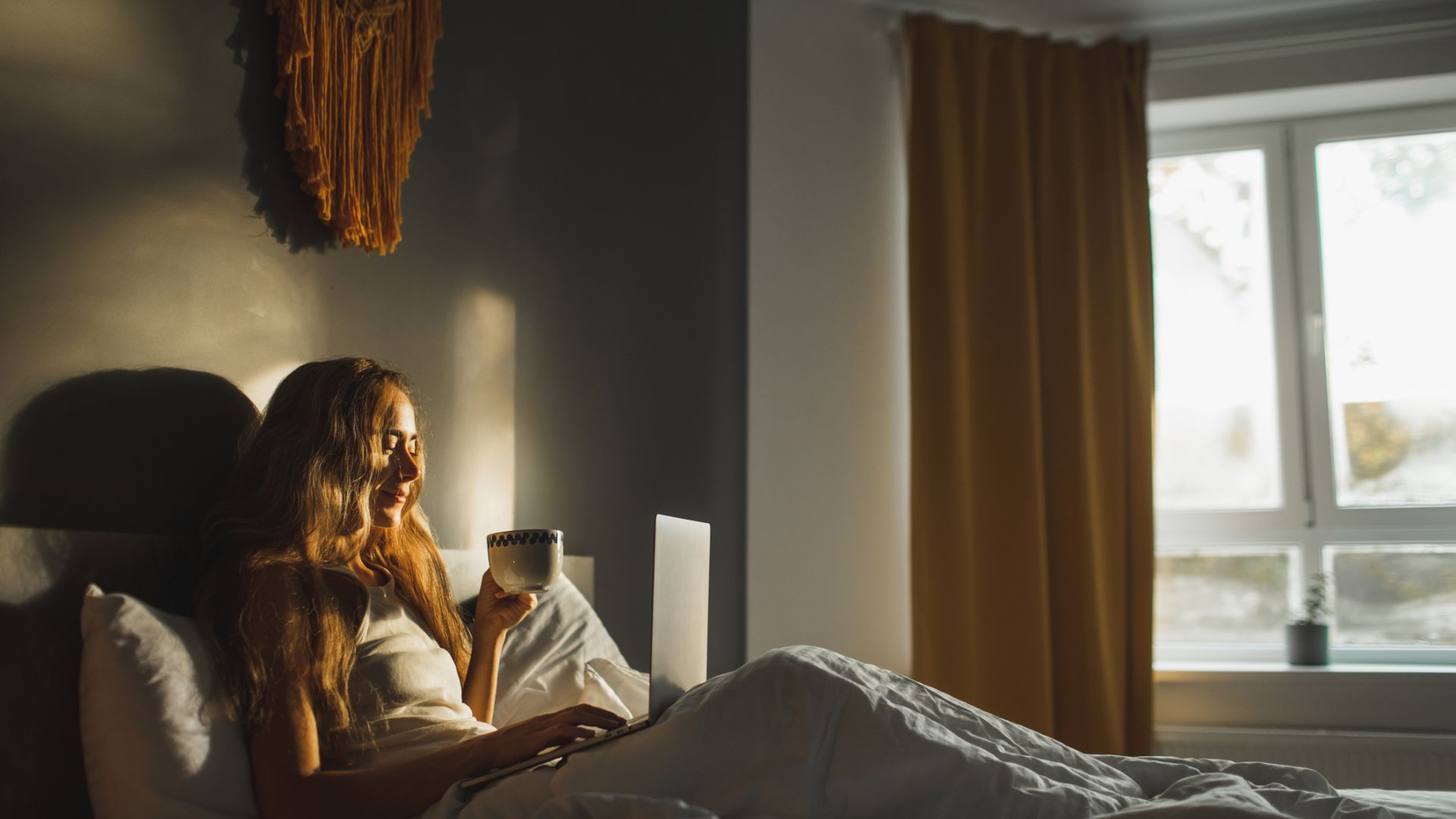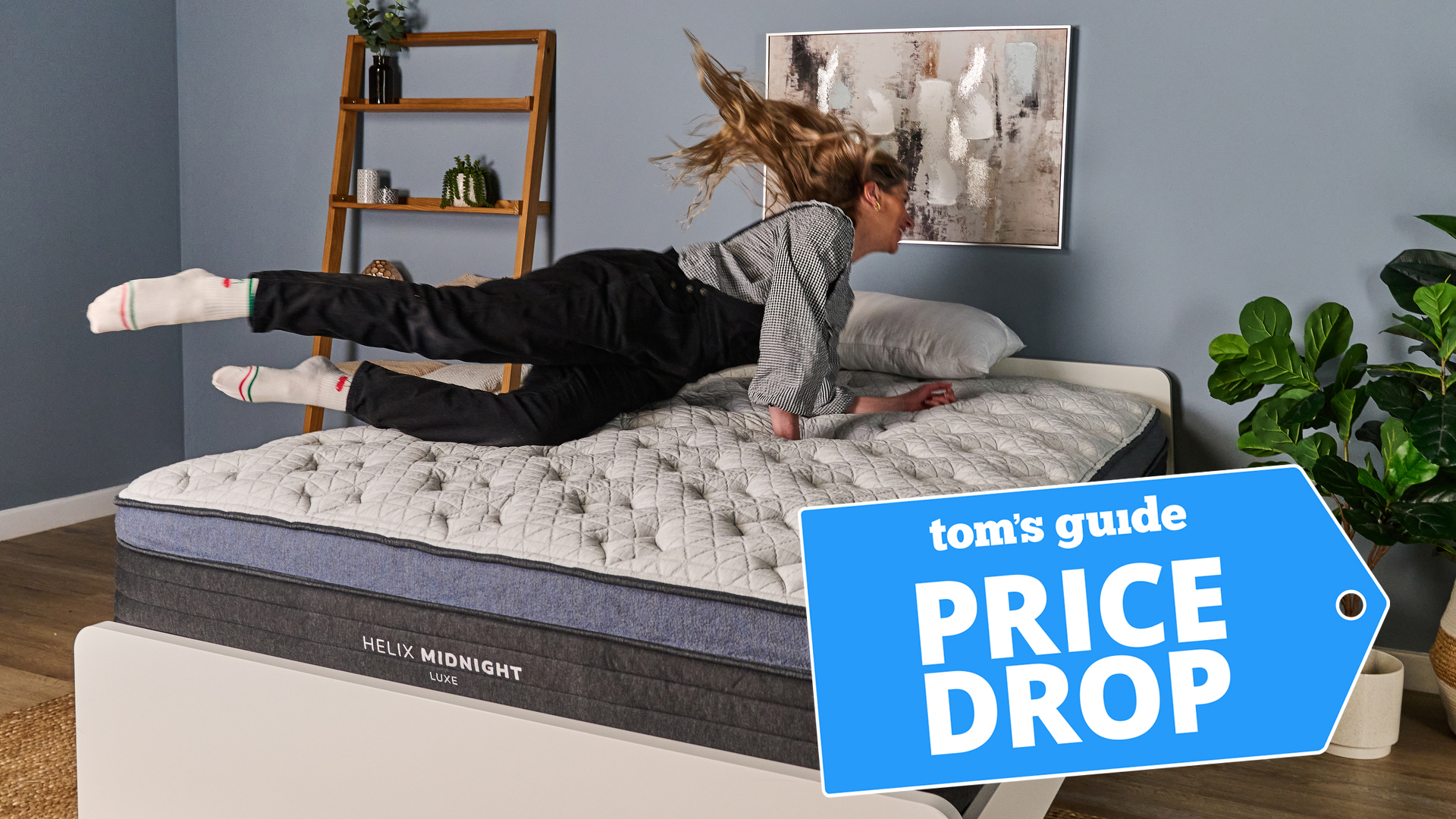Doing this before looking at your phone each morning helps you fall asleep fast at night
Experts say this is a key step in prepping for a great night's sleep

Reaching for our phones is the first thing most of us do when we wake up after a night's sleep. But this daily habit of mindless scrolling before we even lift our heads off the pillow could be impacting our ability to fall asleep fast at night.
According to experts, getting natural sunlight exposure first thing each morning and crucially before you check your phone could be the answer to falling asleep faster later that night. This is because natural sunlight exposure first thing helps regulate circadian rhythm (the body’s internal clock).
Even if you have invested in the best mattress for your body, it can be difficult to fall asleep quickly and easily when your circadian rhythm is out of whack. Here, we’ll explore why getting natural sunlight exposure first thing in the morning (yes, before you dive into WhatsApp) is so important for nighttime sleep.
How morning sunlight helps improve your sleep
Regulation of circadian rhythm
According to the Centers for Disease Control and Prevention (CDC), we are most susceptible to light levels within one hour of waking up, two hours before we go to bed, plus throughout the night. That means that exposure to sunlight, particularly first thing in the morning, helps regulate our circadian rhythm, which is our body’s internal body clock.
Sunlight exposure helps to signal to our brains that it's time to wake up and be alert. This exposure suppresses the production of melatonin, the hormone that makes you feel sleepy, which helps you feel more awake during the day.
Improved sleep-wake cycle

As with anything related to establishing healthy sleep schedules, consistency is the key. Opening your curtains wide and allowing natural light to flood your bedroom on a regular basis will help reinforce your body's understanding of when it's time to be awake and when it's time to sleep.
By establishing a regular wake-up time and exposing yourself to sunlight within an hour of waking (instead of checking your phone in a dimly lit room), you reinforce this cycle, making it easier to fall asleep faster at night and wake up refreshed in the morning.
Get instant access to breaking news, the hottest reviews, great deals and helpful tips.
Enhanced melatonin production
It might sound counterintuitive, but suppressing melatonin levels first thing in the morning through natural sunlight exposure will boost melatonin levels later that night. That’s because sunlight exposure triggers the production of serotonin, the mood-boosting hormone that makes us feel alert.
Around two hours before bedtime, any remaining serotonin gets metabolized into melatonin, the hormone that helps prepare our brains and bodies for sleep. You can boost your body’s production of melatonin further by dimming the lights. Limiting screen time can also help you sleep better, but research suggests blue light might not be as bad for your sleep as we first thought.
How to get more sunlight exposure

Now that we know that morning sunlight exposure is crucial to our sleep quality, you might be wondering how to increase your daylight exposure. According to a study by Harvard Medical School, we should aim for 30 minutes of daylight within an hour of waking. You can do this by:
- Opening your curtains wide: Opening your blinds or curtains allows sunlight into your bedroom
- Going for a walk or a jog: Getting outside first thing in the morning increases sunlight exposure
- Setting your alarm earlier: Waking up earlier means you'll have time to eat your breakfast on your porch or in a sunny spot inside your home
Natural light vs SAD lamp: Which is best for sleep?
We’ve established that sunlight exposure within an hour of waking can improve our overall sleep quality. But what if you wake before the sun, live in a region with limited sunlight, or are a shift worker?
While sunlight exposure is the preferred method of boosting serotonin levels first thing in the morning, a light therapy box is the next best thing. A light therapy box (also known as a S.A.D. lamp) mimics the effects of sunlight by emitting a bright light, and is often used to combat Seasonal Affective Disorder (SAD).
Light therapy boxes are a useful alternative to natural sunlight for shift workers, or for those who require extra help in establishing a healthy sleep schedule during the darker winter months.

Nicola is the Sleep Editor at Tom’s Guide, where she helps steer the mattress and sleep content published on Tom’s Guide, including our Best Mattress for Back Pain buying guide. With a career in journalism spanning the best part of two decades, Nicola brings experience to the team and the knowledge of what makes a great article, whether that’s a how-to mattress cleaning feature, a deep dive into melatonin gummies, or an in-depth mattress review. As a sleep editor, few better understand how important a decent mattress is to the overall quality of our sleep, and precisely how our sleep impacts our physical and mental health. As well as tackling the vast topic of sleep, Nicola joins the raft of expert mattress specialists at Tom’s Guide, who test and compare a wide range of mattresses in order to guide readers towards the very best options on the market.
